
When it comes to ASUS gaming laptops, you usually choose between the TUF and ROG series. Now ASUS is introducing a new option aimed at entry-level gamers. This is the ASUS Gaming lineup, and we had the chance to review the ASUS Gaming X16. Let’s take a look at what it brings to the market.
ASUS told us that the current ASUS Gaming models still use the same packaging and chassis as the Vivobook series. However, starting next year, ASUS Gaming will feature a completely new design in both packaging and laptop body, made specifically for this lineup.
Table of Contents
ASUS Gaming X16 Specifications
| Processor: | Intel Core i5-13420H |
|---|---|
| GPU: | NVIDIA GeForce RTX 3050 Laptop GPU |
| Display: | 16.0″ WUXGA 16:10 (1920 x 1200) 144Hz IPS |
| RAM | 8GB DDR4 |
| Storage | 512GB M.2 NVMe PCIe 4.0 SSD |
| Camera | 720p HD camera With privacy shutter |
| Ports | 1x USB 3.2 Gen 1 Type-C with support for power delivery (data speed up to 5Gbps) 2x USB 3.2 Gen 1 Type-A (data speed up to 5Gbps) 1x HDMI 2.1 TMDS 1x 3.5mm Combo Audio Jack 1x DC-in SD 4.0 card reader |
| Battery | 50WHrs, 3S1P, 3-cell Li-ion |
| Price | Php 49,995 |
The Design

The ASUS Gaming X16 uses the same laptop body as last year’s Vivobook. You’ll notice the Vivobook branding on the laptop cover and just below the display. Even the sticker on the right palm rest still shows the Vivobook 16X label.

The lid is made of metal with an embossed Vivobook logo. It looks clean but tends to attract fingerprints. Opening the laptop, you’ll find a full keyboard with a numpad. However, the layout feels a bit cramped. The zero and enter keys on the numpad are both square and placed on the same row, which might take some getting used to if you’re coming from a standard full-size keyboard.
The function row includes useful shortcuts such as display brightness, volume, keyboard brightness (white backlight only), mic mute, screenshot, and more. You can toggle between the primary and secondary functions by pressing FN + ESC, which is useful if you’re switching between productivity tasks and gaming. The power button is also integrated into the keyboard, located at the upper right corner.
The touchpad is large with a smooth surface, which makes it comfortable to use. It responds well to gestures and I didn’t encounter any issues during use.
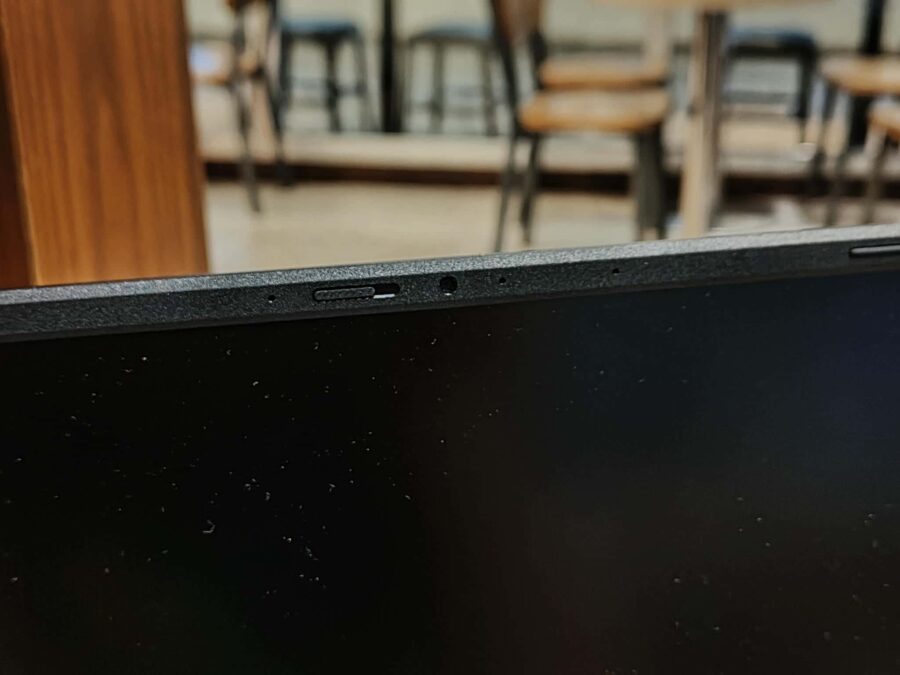
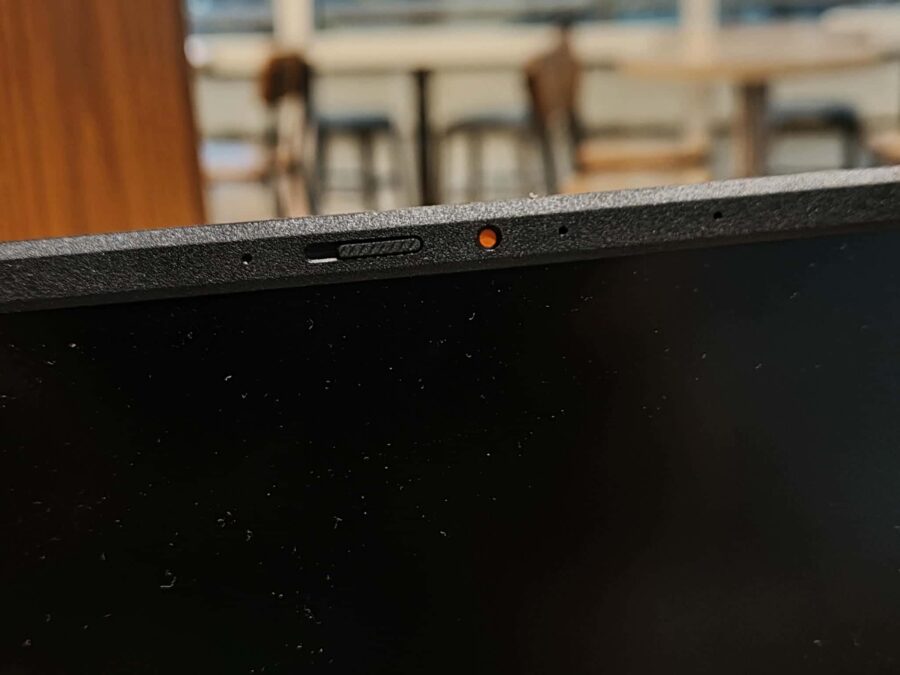
Above the display, there’s a 720p webcam with a physical privacy shutter. When the camera is active, an LED indicator lights up to let you know.
As for the ports, I wasn’t too happy with their placement. Most of them are on the right side, which can be inconvenient for right-handed users since it takes up valuable mouse space.
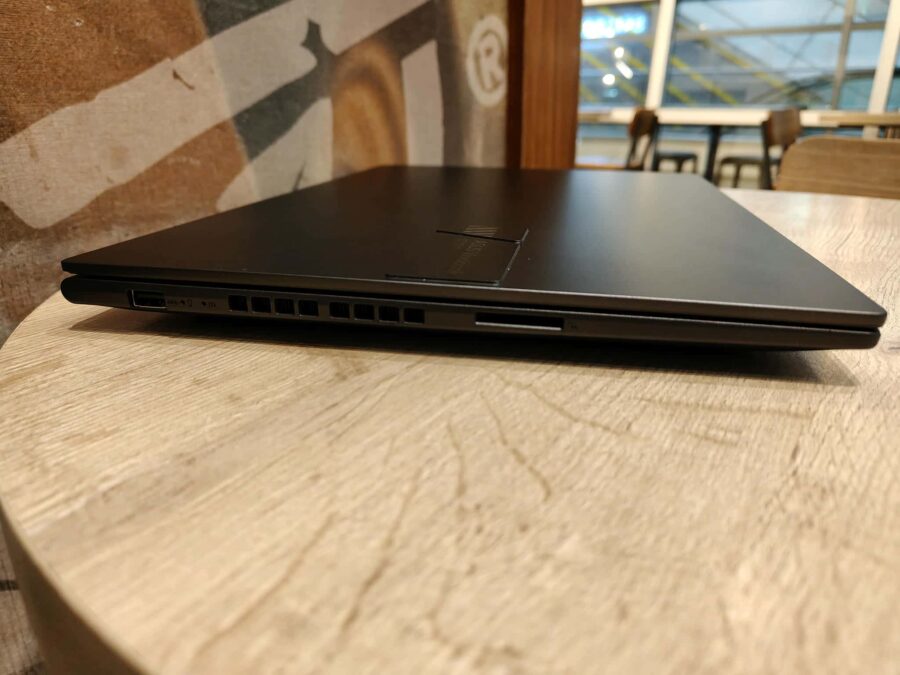

On the left side, you get a full-size SD 4.0 card reader, an LED indicator, and a USB 3.2 Gen 1 Type-A port. The right side houses the DC-in port, HDMI, another USB 3.2 Gen 1 Type-A, a USB 3.2 Gen 1 Type-C, and a 3.5mm combo audio jack.
The Display and Speakers

The ASUS Gaming X16 comes with a 16-inch IPS display that supports a 144Hz refresh rate, delivering smoother visuals whether you’re gaming or multitasking. With a 16:10 aspect ratio and a resolution of 1920×1200, it offers more vertical screen space compared to the traditional 16:9 layout, which is helpful for both gaming and productivity tasks.
The panel reaches up to 300 nits of brightness, which is decent for indoor use but might feel a bit dim under direct sunlight. Color accuracy is basic, as the display covers only 45% of the NTSC color gamut. This means it’s not ideal for color-critical work like photo or video editing, but it’s more than enough for casual gaming, media consumption, and everyday use. The screen also comes with an anti-glare coating to reduce reflections and is TUV Rheinland-certified to help reduce eye strain during extended use.
For audio, the ASUS Gaming X16 is equipped with SonicMaster-tuned speakers. It has downward-firing speakers that produce clear and loud sound when the laptop is placed on a solid surface, taking advantage of the surface to reflect sound upwards. The bass is average, and highs are crisp enough for watching videos, casual gaming, and video calls. However, for more immersive gaming or media experiences, you might still prefer using headphones or external speakers.
The Performance

The ASUS Gaming X16 is powered by an Intel Core i5-13420H processor, paired with integrated Intel UHD Graphics and a dedicated NVIDIA GeForce RTX 3050 Laptop GPU with 4GB of VRAM. This combo offers decent performance for casual to moderate gaming, with support for ray tracing and DLSS on supported titles to boost frame rates and visuals.
Out of the box, it comes with 8GB of RAM, which is soldered to the motherboard. There’s one empty SO-DIMM slot available for upgrades, allowing you to expand the memory up to 24GB by adding a 16GB stick. This upgrade is highly recommended, especially if you plan to game or multitask frequently. With only 8GB, Windows 11 and background processes already eat up a significant chunk of memory at startup, which limits performance for productivity apps and games.
For storage, it includes a 512GB M.2 NVMe PCIe 4.0 SSD. The drive provides fast boot times, quick app launches, and smooth loading for most tasks. It’s a decent starting point, though you might consider upgrading in the future if you store a large number of games or creative files.
The laptop runs Windows 11 Home out of the box and comes preloaded with a few typical ASUS apps such as MyASUS, McAfee, and ProArt Creator Hub. Interestingly, ASUS chose not to include Armoury Crate, which is their usual performance management app for ROG and TUF laptops. Instead, the ProArt Creator Hub is used here—an app more common in ASUS creator-focused devices.
Within the ProArt Creator Hub, you’ll find four fan profiles: Whisper, Standard, Performance, and Full. Switching to Full mode pushes the fan to around 4700 RPM. This keeps temperatures in check during heavy loads, but it gets loud—comparable to a small jet engine, so it’s something to keep in mind if you’re gaming in a quiet room.
Here are the synthetic benchmarks and gaming performance results for the ASUS Gaming X16:
Geekbench 6

Cinebench R25
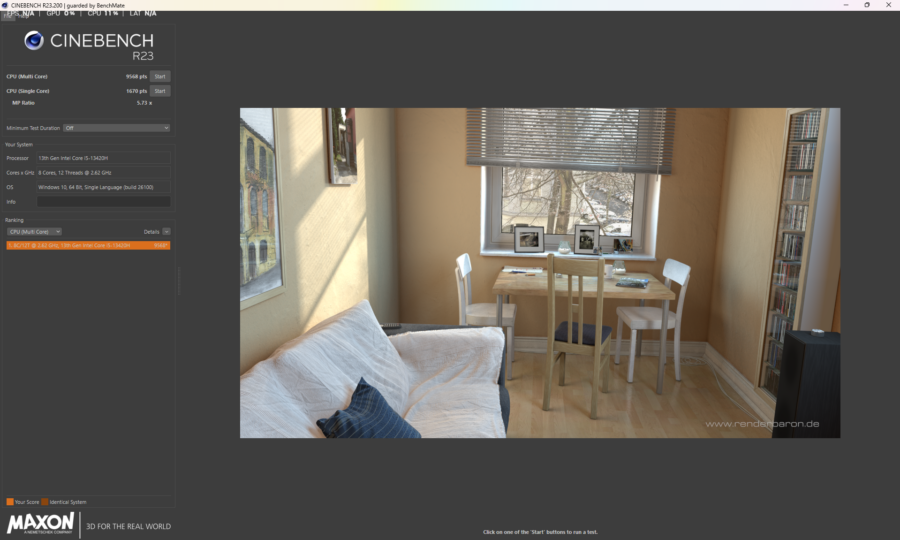
CrystalDiskMark / CrystalDiskInfo
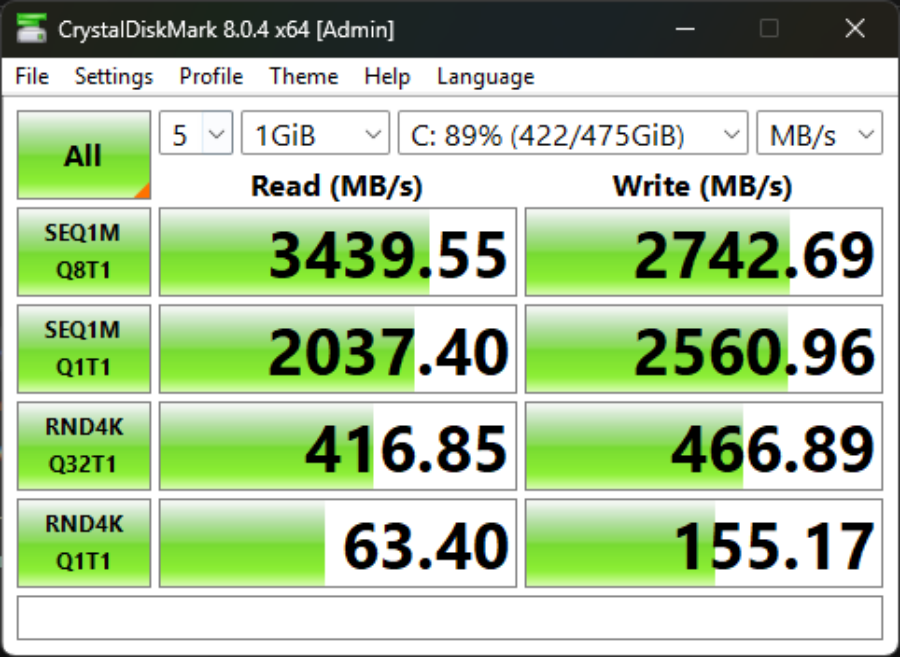

7-zip
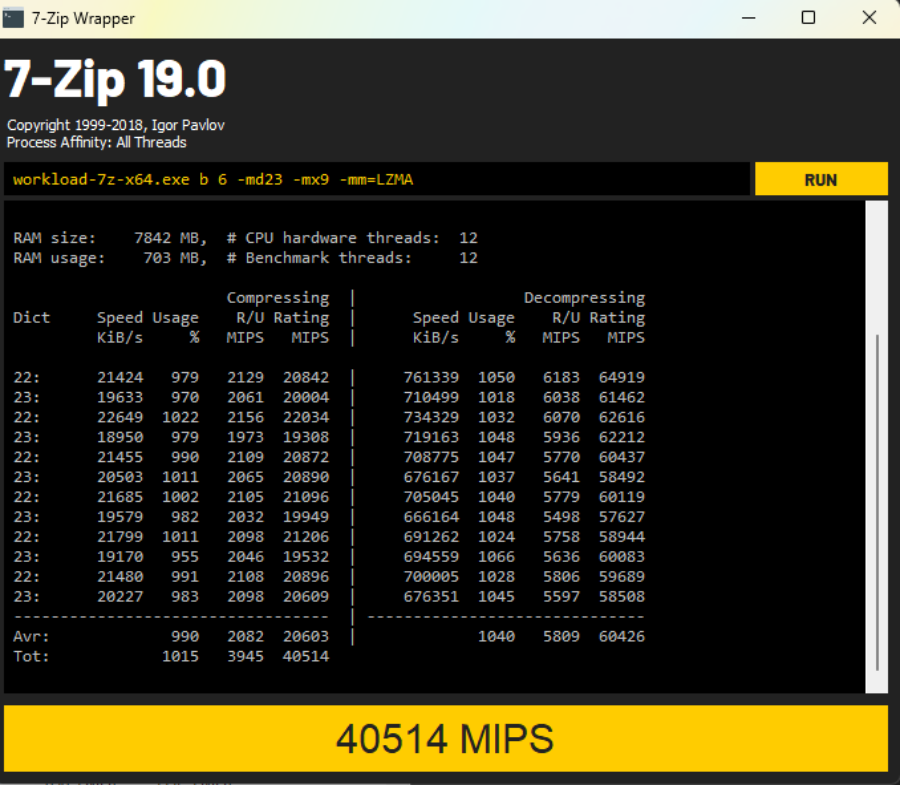
PCMark
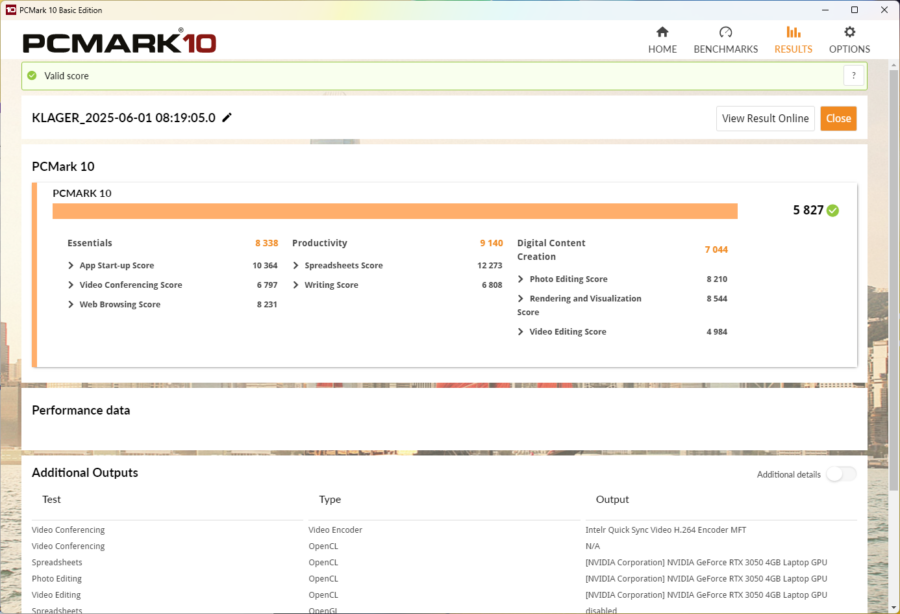
Unigine Superposition Benchmark
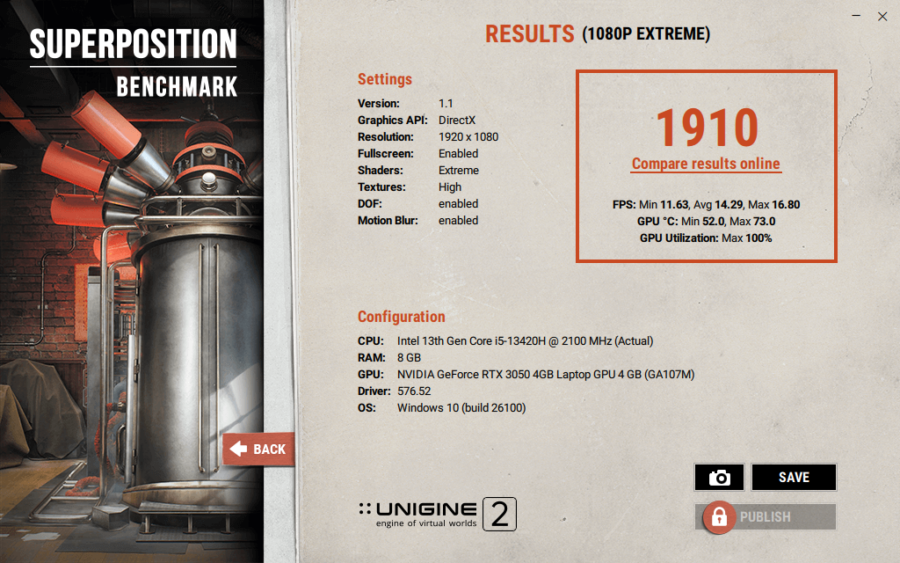

3DMark
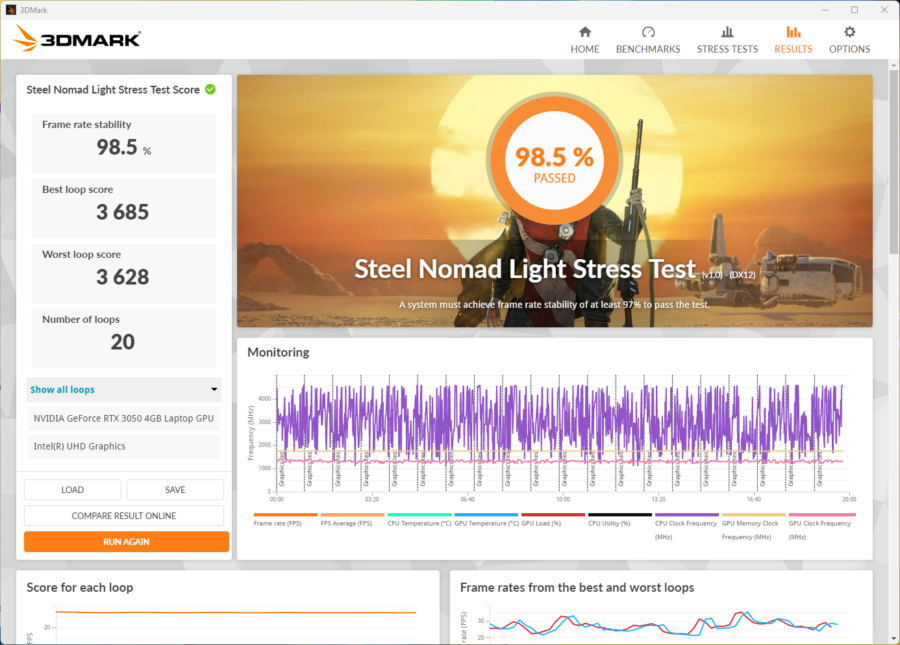
Valorant
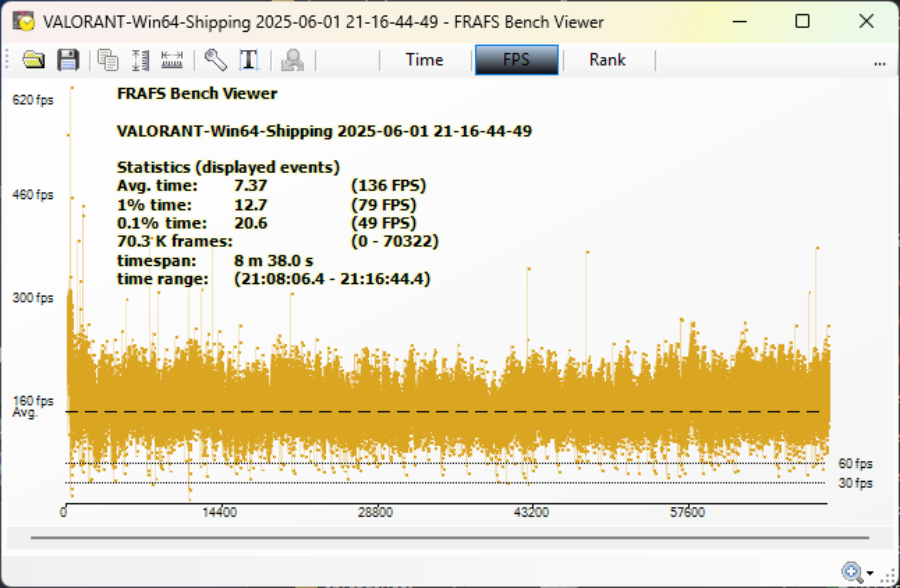
Shadow of the Tomb Raider
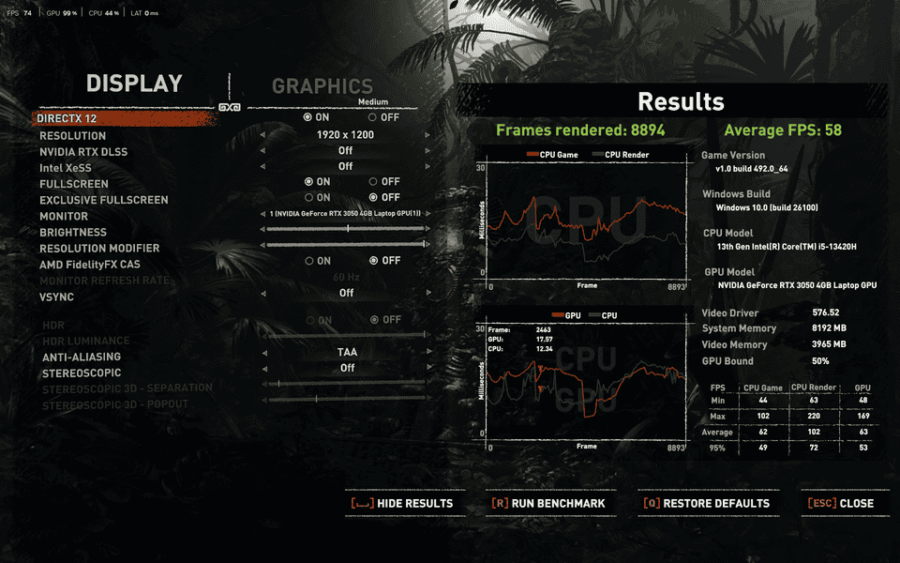
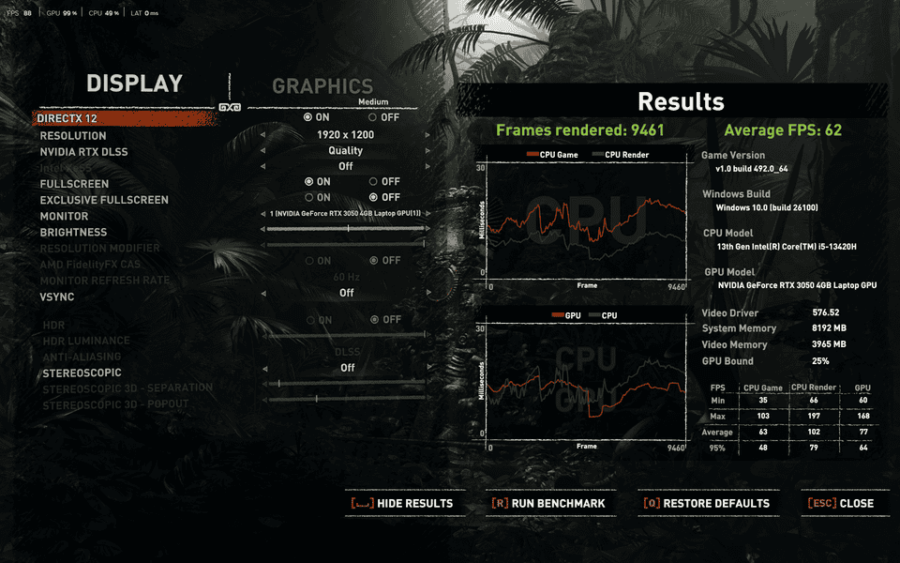
Genshin Impact
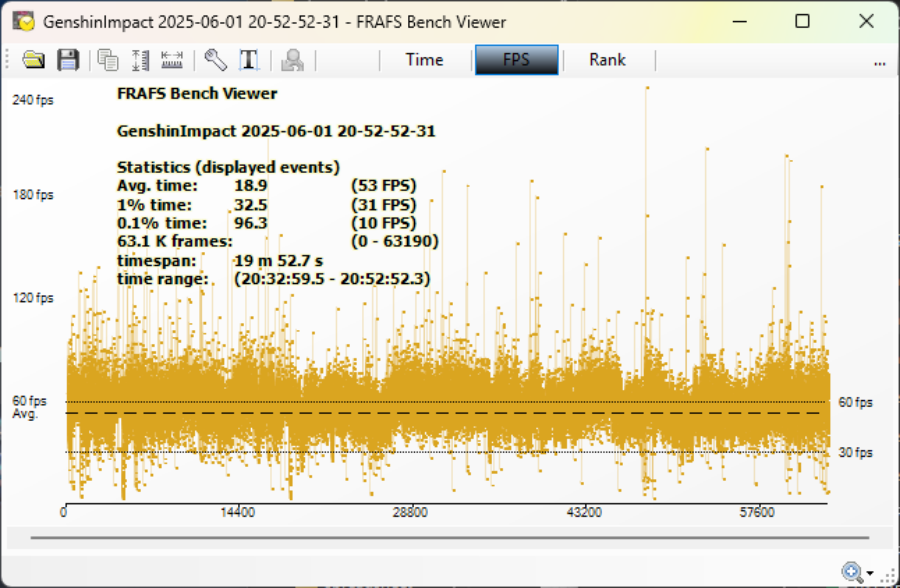
Our overall experience with the ASUS Gaming X16 was a bit limited when it came to multitasking and gaming, primarily due to the 8GB of soldered RAM. The system quickly uses up available memory, especially when running multiple apps or browser tabs alongside games. Upgrading to at least 16GB by adding a stick in the available RAM slot is highly recommended. It makes a noticeable difference in overall responsiveness, stability, and gaming performance.
We also noticed that the laptop performs significantly better when set to Performance or Full fan modes. Compared to Standard or Whisper modes, the system feels more responsive and maintains higher performance levels, especially during gaming or heavy workloads. However, running it on higher fan modes naturally reduces battery life and increases fan noise. Still, it’s worth it if you’re plugged in and focused on performance.
When gaming, we recommend switching to Full fan mode to get the most out of the CPU and GPU. The fans spin up aggressively to keep the system cool, allowing the hardware to maintain high performance. The downside is that this setting has to be manually selected each time you game. Unlike ASUS’ ROG or TUF models with Armoury Crate, the Gaming X16 doesn’t have automatic performance switching. Armoury Crate usually detects when a game is launched and adjusts power and fan profiles accordingly—but that feature is missing here since the laptop only uses the ProArt Creator Hub.
You’re also limited in terms of the games you can comfortably run with only 8GB of RAM. Many modern titles now list 16GB as the recommended minimum, not just for better performance but for basic stability. With just 8GB, you may experience slower load times, stuttering during gameplay, or even crashes in memory-intensive games. Titles like Cyberpunk 2077, Hogwarts Legacy, and even some competitive multiplayer games like Warzone or Apex Legends benefit greatly from having more RAM. Upgrading to 16GB not only opens up your playable game library but also ensures smoother performance across current and future titles.
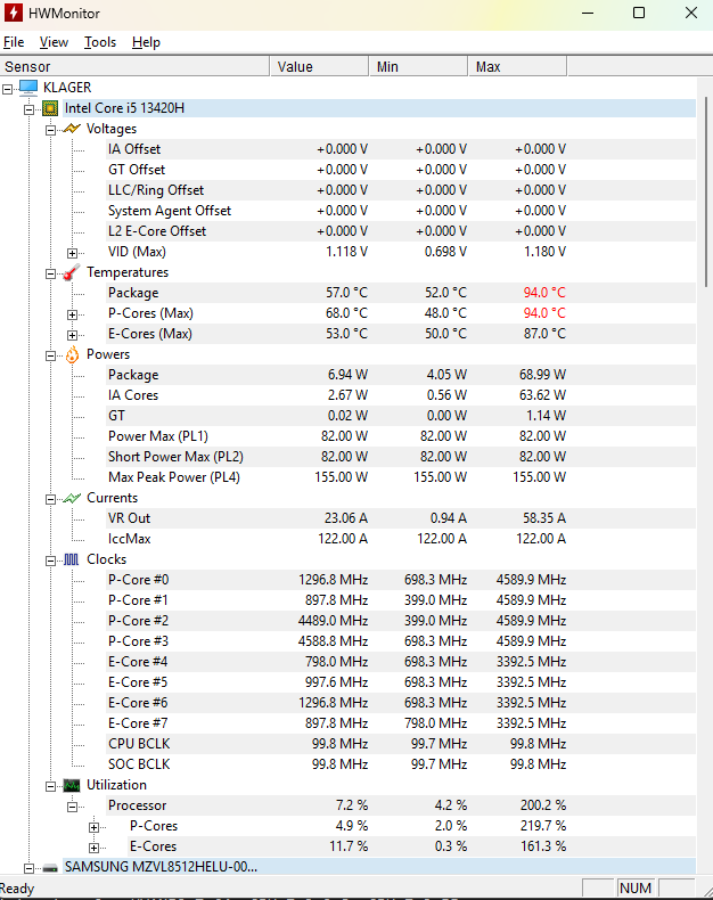
In terms of thermals, the laptop does a decent job. We tested all the fan profiles and found that the Intel Core i5-13420H never hit thermal throttling limits, even under extended load. In a room with a 29°C ambient temperature, the CPU idles at around 55°C in Standard mode. During gaming, it peaks at 95°C but averages around 75°C. Switching to Full fan mode brings idle temps down to 45°C, peak temps to around 85°C, and it stabilizes around 70°C to 75°C during gameplay. This shows the cooling system is effective when given full airflow, though it gets loud.
The Battery
The ASUS Gaming X16 is equipped with a 50WHrs 3-cell Li-ion battery (3S1P configuration) and comes bundled with a 120W power adapter. In our YouTube video playback test, the laptop lasted 4 hours and 26 minutes, which is fairly decent for a gaming laptop with a dedicated GPU.
For gaming on battery, the laptop delivered around 2 hours of playtime, which is expected given the power draw of the RTX 3050 and the i5 processor. During light tasks such as web browsing, writing, or using productivity apps, we averaged around 3 hours of usage. These results are in line with most entry-level gaming laptops, where battery life is secondary to performance.
Of course, for the best performance—especially during gaming or heavy multitasking—it’s still ideal to keep the laptop plugged in to fully utilize the CPU and GPU without power limits.
ASUS Gaming X16 Verdict

The ASUS Gaming X16 feels somewhat unfinished since it reuses the packaging and chassis from last year’s Vivobook. However, there is a clear intention behind this approach. ASUS aims to offer a gaming laptop that doesn’t scream “gamer” and targets budget-conscious buyers who want solid performance without flashy design. That said, the laptop’s design and the inclusion of the ProArt Creator Hub software feel out of sync with the ASUS Gaming branding, which creates some confusion about its identity.
Despite these shortcomings, the ASUS Gaming X16 is still a welcome addition to the market and delivers good performance for its price point. To truly unlock its potential, upgrading the RAM right after purchase is highly recommended. I’m looking forward to seeing what ASUS has planned for next year, especially with their promise of a completely new design and packaging created specifically for the ASUS Gaming lineup.
The ASUS Gaming X16 is priced at Php 49,995.





